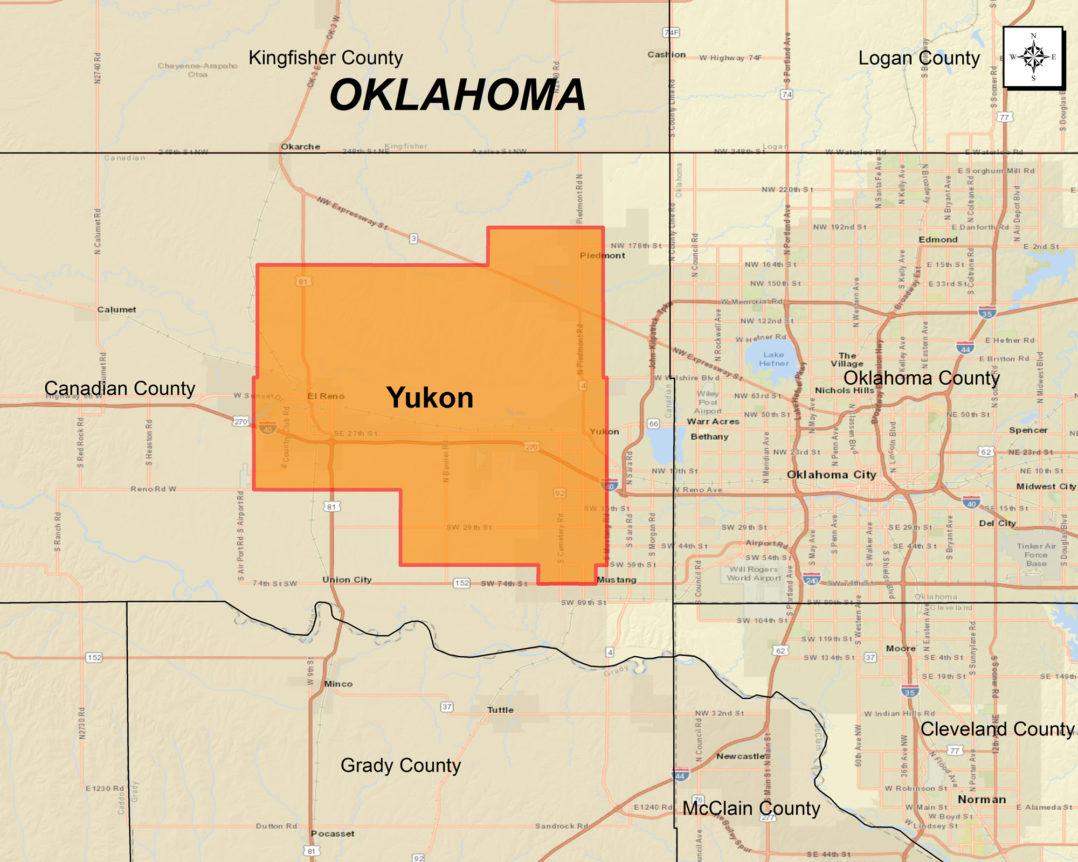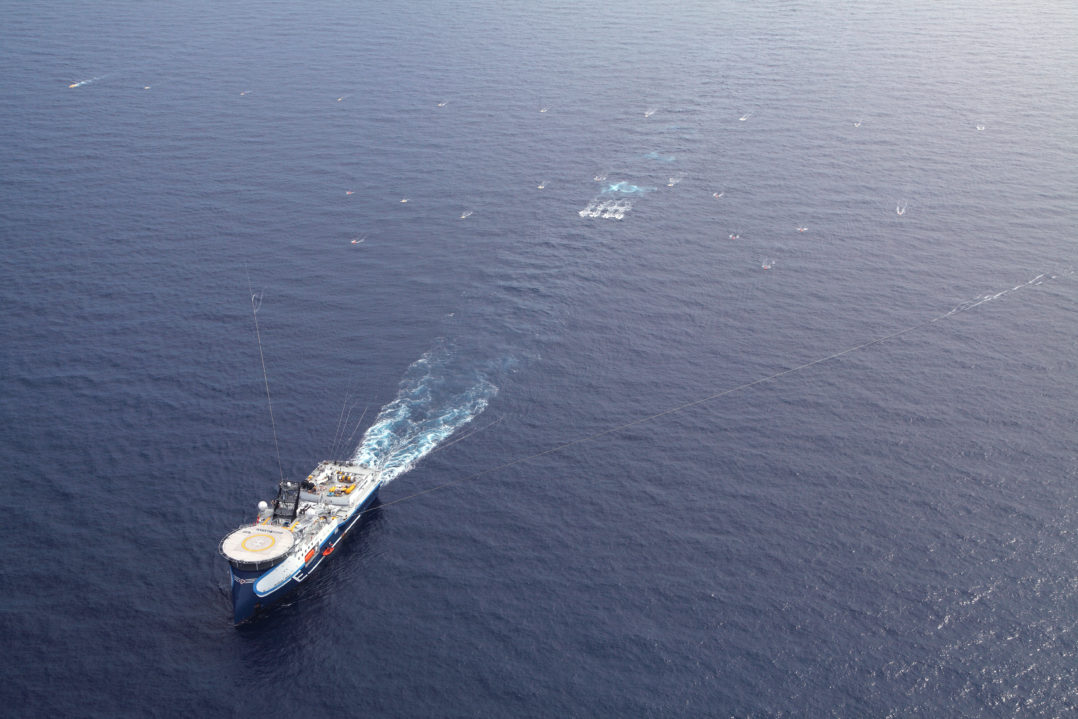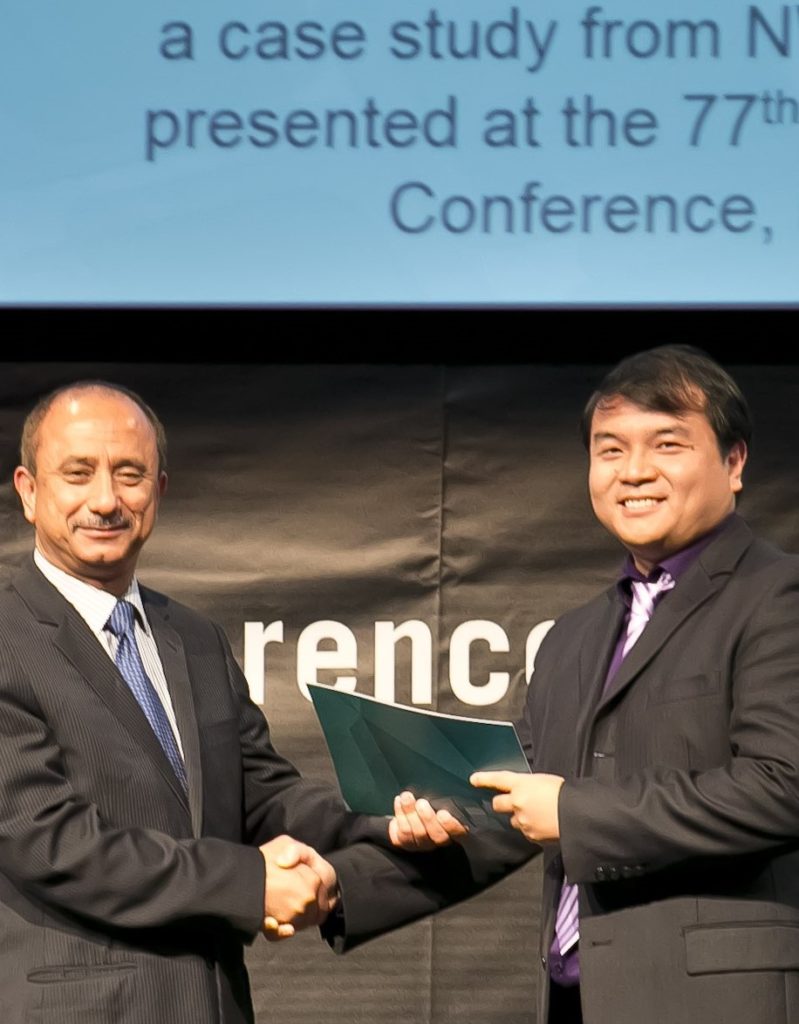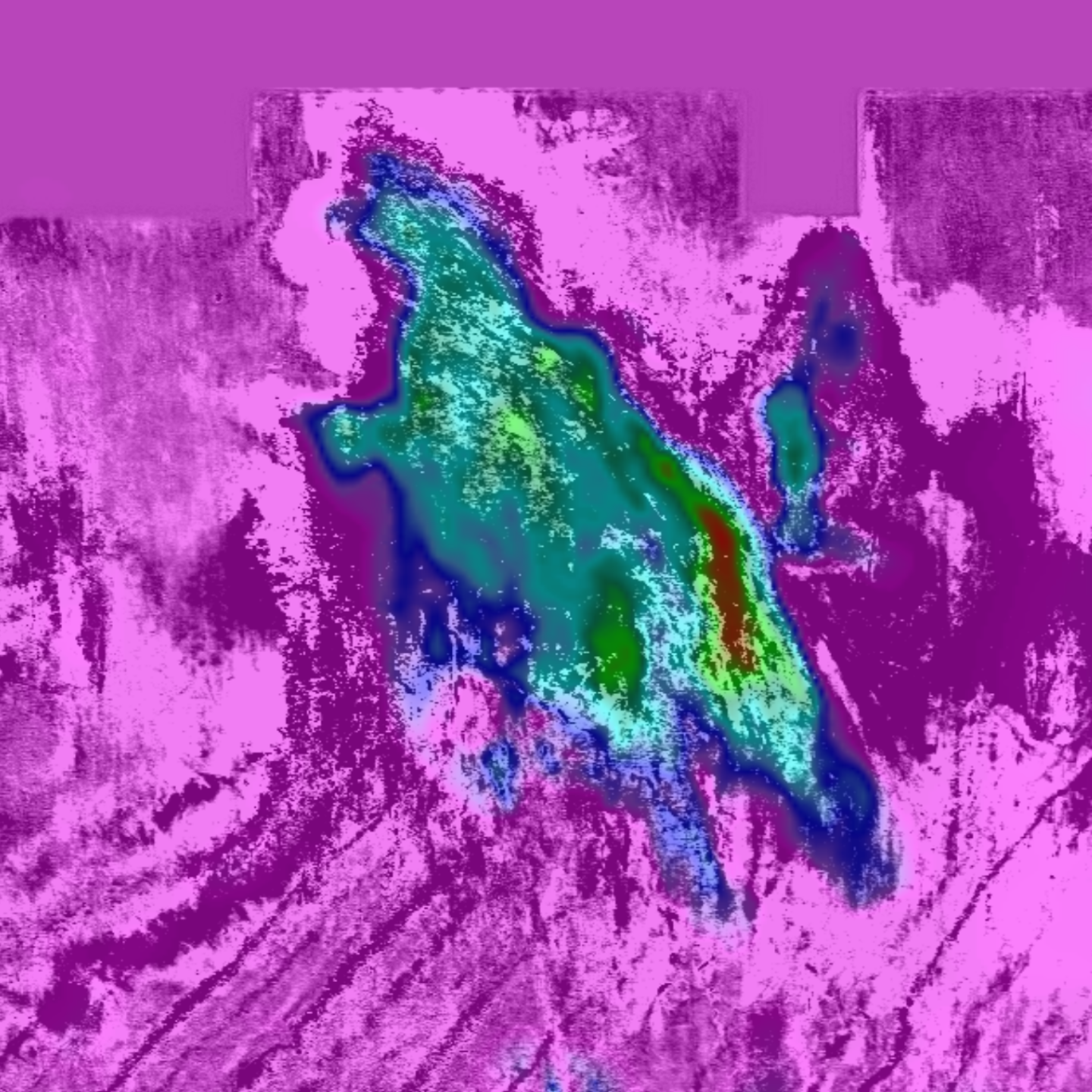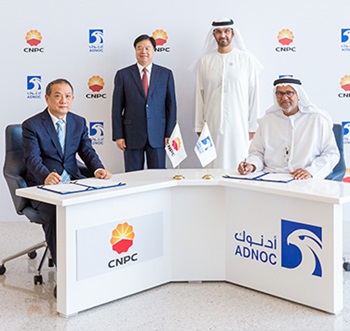CGG, its technology partner, and Ardiseis, subsidiary of the Arabian Geophysical and Surveying Company (ARGAS), the Middle East’s seismic acquisition specialist, have announced the successful completion of the world’s highest-density broadband seismic survey ever acquired onshore or offshore.
The ultra-high density of the data recorded on the West-Kalabsha survey on behalf of Apache Corporation (Apache) heralds a step-change in the quality of seismic that can be economically acquired in Egypt’s Western Desert and a quantum leap in imaging for the Middle East and North Africa region, CGG said in a media release.
Apache set Ardiseis the ambitious challenge of delivering reservoir characterization-ready broadband seismic data from a 2,000-km2, ultra-dense survey, representing 72 million traces per km2, two-to-three times denser than any survey acquired to date worldwide, according to the Paris-based geoscience company said.
“To achieve the ultra-high productivity acquisition required to produce the data at a comparable pace and cost to conventional land acquisition, Ardiseis deployed CGG’s proprietary Unconstrained Blended Acquisition technology for the first time in Egypt. This technique optimizes field operations to the extreme, with a large fleet of vibrators operating simultaneously and independently from each other non-stop.
“CGG successfully deblended the data by running its proprietary sophisticated deblending algorithm on its massive computing resources. In addition, Ardiseis used CGG’s broadband suite of technologies, CleanSweep™ and EmphaSeis™, to acquire the required low-frequency-rich broadband data (starting from 1.5Hz), which is free of the harmonic noise contamination that has so far hindered industry adoption of true broadband high-productivity Vibroseis acquisition,” the company said.
Joe Versfelt, Apache’s Egypt region Exploration Manager, said: “Since Apache was awarded the West Kalabsha concession in 2004, 19 oil fields have been discovered and production capacity is currently over 55,000 bpd and growing. However, the large volume of 3D seismic data Apache has acquired over the years has limitations for imaging some structures, faults and stratigraphy. Apache saw the potential of new land broadband 3D technology to deliver a quantum leap in imaging and resolution as well as our ability to take advantage of the most advanced quantitative interpretation technologies. Our focus was to reduce risk in existing plays, develop new prospects and potentially discover new plays.
“We are extremely grateful to EGPC for once again supporting us in our ongoing efforts to introduce new technologies to Egypt in order to optimize our E&P operations. The preliminary results of the West Kalabsha 3D survey are extremely encouraging and we plan to acquire more of this high-grade seismic data in the region.”
Saad Saud A. Al-Akeel, ARGAS CEO and Ardiseis MD, added: “On this game-changing survey we demonstrated how the combination of outstanding operational performance from ARGAS and Ardiseis, together with technical excellence and innovation from CGG, can make this new generation of high-fidelity seismic an affordable reality. Having proven the feasibility of this technology in Egypt with reduced turnaround time and quality improvements, we can see its potential for successful application in other desert areas in the wider Middle East region for both exploration and field development applications.”
Jean-Georges Malcor, CEO, CGG, concluded: “CGG was pleased to have had this opportunity to continue our pioneering work with Apache and Ardiseis, and once again introduce new acquisition technologies to Egypt. By deploying our suite of land broadband technologies, ARGAS and Ardiseis have shown that it is possible to acquire affordable high-fidelity data that can be used for both exploration and field development purposes on a large scale. The benefits in terms of reduced costs, increased chances of identifying secondary prospects, more efficient field development plans and earlier returns on investment are obvious when we compare the previous approach of acquiring sparse 3D exploration surveys and returning at a later date to separately acquire smaller higher-density datasets for field development.”
The announcement came barely a week after CGG said it had completed acquisition of its Yukon 3D multi-client survey in Canadian County, Oklahoma. The 219-square-mile full-azimuth data set is designed to image the Stack play of the Anadarko Basin west of Oklahoma City.
“Imaging efforts will focus on gaining a better understanding of the facies distribution of the Meramec, Osage and Woodford play intervals. A preliminary prestack time-migrated (PSTM) product is due for completion in March. A final PSTM, incorporating orthorhombic anisotropy, with 5D regularization and interpolation of azimuths and offsets, will be delivered in the second quarter of 2018. This high-end processing workflow will pave the way for a full Reservoir Optimization Package (ROP),” CGG said.
“To enhance reservoir characterization, ROPs aid understanding by delivering state-of-the-art reservoir-oriented subsurface imaging and enhanced reservoir description, utilizing CGG’s RoqScan™ rock physics workflows. This leads to predictive model generation of key properties that control production, including spatial reservoir quality, permeability, porosity and reservoir thickness. These are then used to create calibrated geomechanical models including geostatistical inversion for completion optimization.”
Luc Schlumberger, EVP, Multi-Client & New Ventures, CGG, said: “Our Yukon survey marks another stage in our regional expansion in the Anadarko Basin. This is an area where we are seeing strong industry support for improved imaging and we believe our state-of-the-art processing and full Reservoir Optimization Package will give greater insight into the numerous targets of the Devonian to Pennsylvanian age.”

